
Track Plans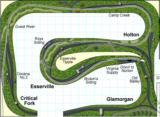 C&I Track Plans C&I Track Plans |
Photos | Models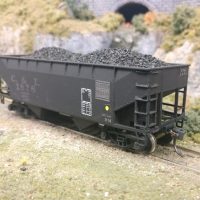 C&I Model Page C&I Model Page |
History
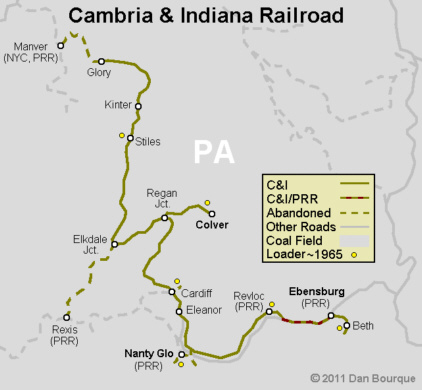 The Cambria & Indiana’s history goes back to 1904 when a small lumber railroad running north out of Rexis, PA was incorporated as the Blacklick and Yellow Creek Railroad. In 1909, two local businessmen, John Heisly Weaver and B. Dawson Coleman, bought the railroad and began to transform it into a coal-hauling road for their mines.
The Cambria & Indiana’s history goes back to 1904 when a small lumber railroad running north out of Rexis, PA was incorporated as the Blacklick and Yellow Creek Railroad. In 1909, two local businessmen, John Heisly Weaver and B. Dawson Coleman, bought the railroad and began to transform it into a coal-hauling road for their mines.
In 1911, the name was changed to the Cambria & Indiana Railroad (after the counties the railroad served). The first load of coal from Colver, PA was shipped in 1911, the same year a connection was made with the PRR- and NYC-owned Cherry Tree and Dixonville Railroad at Manver, PA. In 1916, a line was completed to additional mines at Nanty Glo and Revloc. Soon, more than 20 mines were loading on the C&I. In 1922, Coleman sold his 40% of the C&I to a subsidiary of the NYC. Pre-WWII, the C&I, a 60-mile shortline, had the largest fleet of rolling stock in the Western hemisphere, and for decades, like the Interstate RR in Virginia, most of its revenue came from per diem paid on the hopper fleet while it was off home rails. In 1950, the remaining 60% of the C&I was sold to Bethlehem Steel who acquired the remaining 40% in 1975. The last bit of track was completed in 1963 with the extension from Revloc to a new Bethlehem Steel mine at Beth, PA, with much of the extension consisting of trackage rights over the PRR. The last new loader on the C&I was constructed at Stiles in 1965.
The 1970s saw a decline in steel industry and coal production along the C&I, and a 1977 flood led to the abandonment of the branch to Rexis, the oldest part of the line. This corresponded with Conrail’s abandonment of its damaged branch in the area as well. Conrail also removed its tracks to Manver, and all traffic was routed via Ebensburg, PA. By the early ’80s, the only remaining loader on the line was at Beth, and in the early 1990s, locomotive facilities were moved from Colver to Revloc. In 1994, Bethlehem Steel shut down its mine at Beth. The C&I no longer had a reason for being, and all of its tracks except for the short Beth branch were pulled up.
Coal Lines and Operations
The C&I’s reason for being was to haul coal from various on-line loaders to connection points with the NYC and PRR, and later the Penn Central and Conrail. The coal loaders were spread out along the various branches and operations consisted of mine runs from the engine facilities and small yard at Colver, PA to the loaders and then interchange points.
In addition to hauling coal, the C&I also ran a decent sized car and locomotive repair shop at Colver. Cars from other lines would be ferried from interchange points to the shops at Colver and back, adding a little variety to the endless strings of black hoppers.
Motive Power. One unique aspect of the C&I in the diesel era was the motive power. The C&I dieselized with EMD switchers, a trend that continued until the end. A C&I mine run would leave Colver following a mixed string of yellow-and-black SW9s and 1200s and later SW1500s and MP15s.
C&I Diesel Roster
| Number | Model |
| 15-18 | SW1500 |
| 19-20 | MP15 |
| 30-37 | SW9 |
| 38-44 | SW1200 |
| 45 | SW7 |
Related Products:
Sources:
- The Diesel Shop – Cambria & Indiana All-Time Roster
- The Cambria and Indiana Railroad website




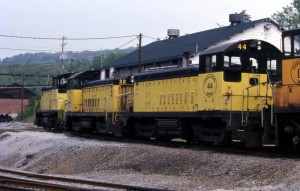
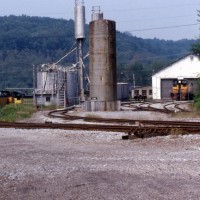 C&I Photo Page
C&I Photo Page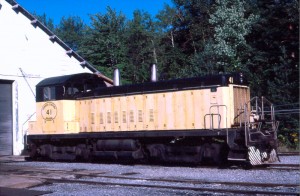
Your map is missing a crossing—Kline–down below Stiles.